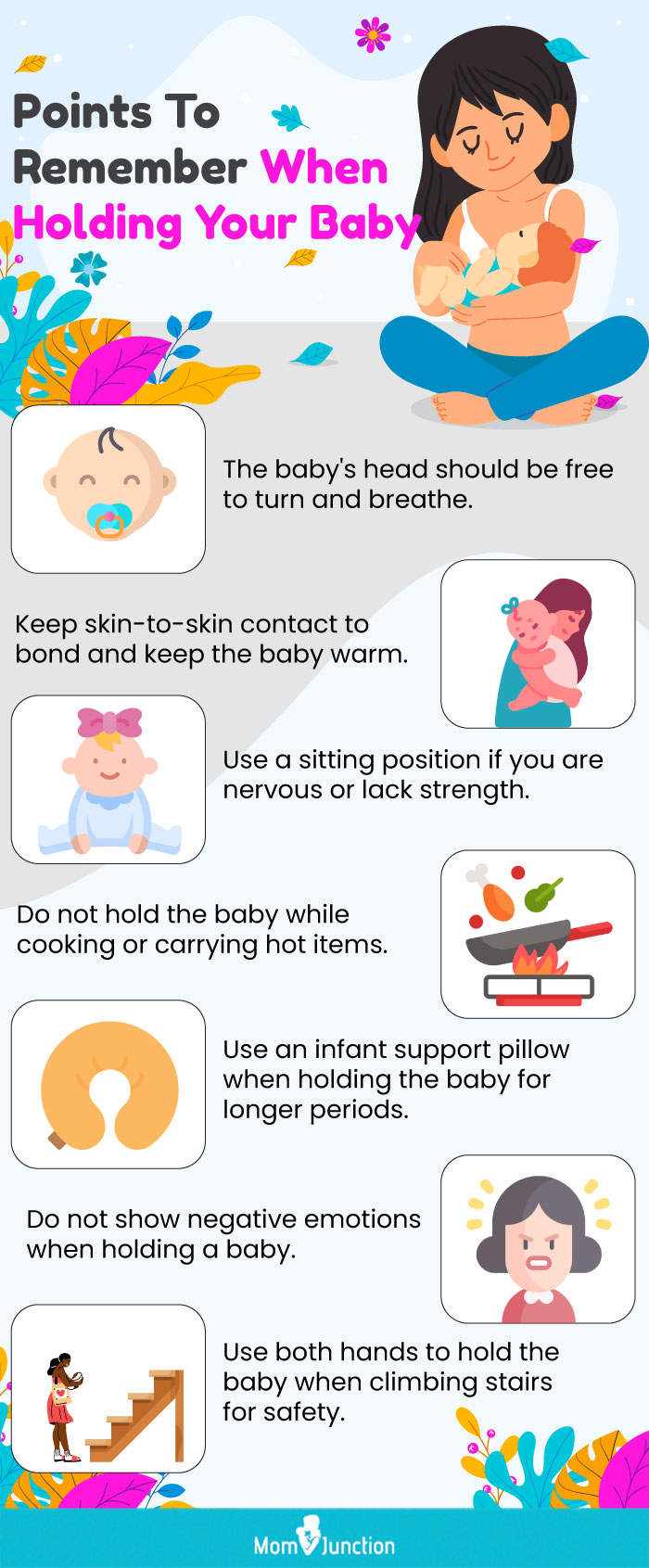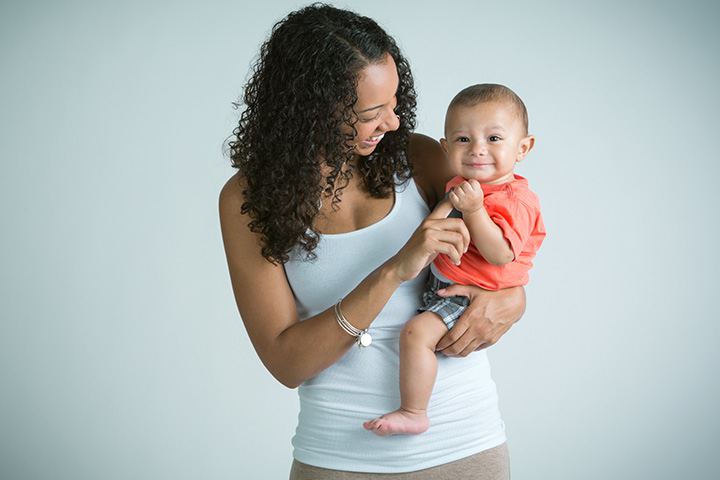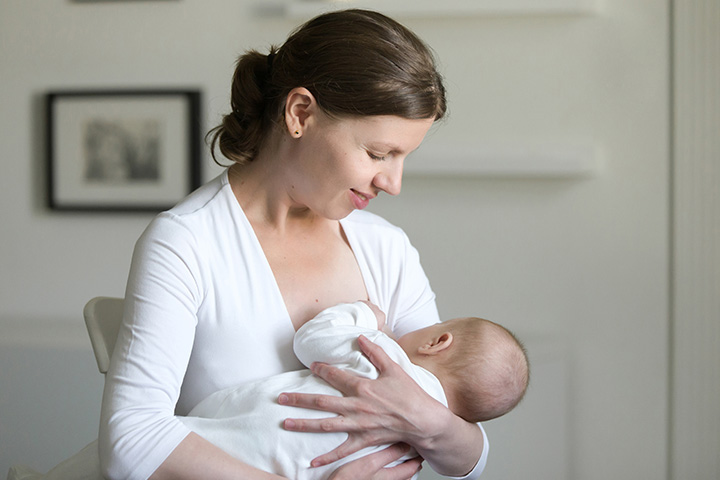
When the nurse brings your baby to you, you are filled with emotions; it’s truly one of the most beautiful moments in your parenting journey. Your hands may shake, and tears of joy start streaming down your face. But like any other new parent, you may wonder how to hold a baby correctly.
Every parent feels a sense of fear out of protectiveness for their baby while holding them in their arms. You may think things like, what if they accidentally slip out from your hands. However, you need to be gentle and calm while holding your baby despite the obvious nervousness.
In this post, we help you out with it. We have compiled a collection of information about preparation steps, infant care tips, and safe and soothing baby-holding techniques.
Prep Up To Hold Your Newborn
- Clean hands: Wash your hands before you take the baby. Their immune system is very immature, maintaining hand hygiene is essential to stop spreading infections. Use mild soap and warm water to rinse your hands. Also, keep a sanitizer handy
 Quick fact
Quick fact- Make yourself comfortable: It is not just the physical comfort but also the confidence about your hold. You may feel scared at first, but with time you will adjust.
- Offer support: Newborns have little neck muscle control. Therefore, you need to give her head and neck support. Also, make sure not to press the soft spots on the head (fontanelles). A supportive hold is critical until your baby reaches three months when she develops a good control over the head and neck muscles.
How To Pick Up A Baby?
To hold a baby, you should pick her up first. Place one hand under the head and another beneath the bottom. Now raise the body to your chest region. You can hold the baby in this position as long as you are comfortable holding the baby’s neck and head.
Also, your baby likes to be held in some positions while she is uncomfortable in some others.
 Be watchful
Be watchfulPaul Patterson, MD, PhD, FAAP, a board-certified pediatrician and expert in developmental and behavioral pediatrics from Bethesda, Maryland, says, “When carrying a newborn, be sure to support their head and neck to prevent any quick head movements that may startle them or cause an injury. When picking a baby up from the lying down position, gently bring one hand behind their head and the other behind the child’s back or bottom. Then, gently lift them toward your chest.”
Choosing Baby Holding Positions
You can even try out different positions to understand what suits her the best.
1. Shoulder hold
This is one of the most natural holds for your newborn. Here is how you should do it:
- With the baby’s body parallel to yours, lift her to your shoulder height.
- Rest her head on your shoulder so that she can look behind you.
- Support her head and neck with one hand, and the bottom with another hand.
This position allows your baby to hear your heartbeat.
2. Cradle hold
Cradling is quite a simple and natural method to hold a baby; and you can do this by swaddling the baby as well. Here is how you can cradle your newborn to sleep:
- With your baby parallel to your chest level, slide your hand from her bottom up to support the head and neck.
- Gently place your baby’s head into the crook of your elbow.
- Now move your hand from the neck to the bottom and hips.
- Bring your baby close to you, and you can quickly bring her to sleep.
3. Belly hold
Your baby will surely enjoy this baby hold. Here is how to handle the newborn:
- Lay your baby with stomach facing down on one of your forearms with head up over the elbow.
- Let her feet land on either side of your hand, at an angle closer to the ground level.
- Lay your other hand across the baby’s back to make her feel secure.
- This baby positioning technique can be helpful for burping. Gently stroke the baby’s back to help release any trapped gas.
YouTuber and a mother of three, Sara shares helpful advice on how to hold a baby in a ‘belly hold’ position. She says, “I am going to put the baby (her youngest daughter) on her tummy first. I now have my hand completely under her body; her little head is cradled in my hand, and I pick her up. Personally, for me, it is a lot more comfortable sitting down, using a pillow or a blanket, because she gets heavy. She will fall asleep fast in this position, especially if she has gas.”
4. Hip hold
You can hold your baby’s hips once she gains complete control over her head and neck. So, try this position when your baby crosses three months. Here is how you can do this:
- Face your baby outward and make her sit on your hip bones.
- You should wrap your arm around her waist.
- Your baby will be able to look at things around her comfortably.
5. Face-to-face hold
This hold will let you interact with your baby. Here is how you can try the hold perfectly:
- Support your baby’s head and neck with one hand.
- Offer support to her bottom with another hand.
- Now hold the baby just below the chest facing you.
- Enjoy making her smile and have fun interacting with her.
6. “Hello World” hold/ Chair hold
Got a curious baby? Then this is an excellent hold that makes her see what is going around. Here, she will sit on your hand as if she is sitting on a chair.
- Let your baby lean back and rest on your chest so that her head has proper support.
- Place one hand across her chest to prevent her from leaning on the sides.
- Place your other hand under her bottom.
- Give her a good support.
If you want to try the same hold while sitting, there is no need to support her bottom. This position is not recommended for babies below three months.
7. Football hold
This hold also serves as a feeding position; you can use it while standing or sitting. Here is how you should do it:
- Support your baby’s neck and head with your hand, and the rest of her back with your same forearm.
- Adjust the baby’s head and neck with the other hand.
- Make the baby curl towards your body side, with her legs extended behind.
- Draw your little one closer to your chest.
- Use the other free hand for offering extra support to the head or feed the baby.
8. Lap hold
This is another hold you can use while bottle-feeding the baby, and can be used while in a sitting position.
- Place your feet firmly on the ground level when sitting, and take your baby onto your lap.
- The baby’s head should be near your knees with face upwards.
- Place both of your hands beneath the head for support, and your forearms all along the body.
- Let her feet tuck in at your waist region.
 Quick tip
Quick tipHow To Hold A Baby After Feeding?
When feeding the baby, keep her head raised from the lap or a crib (be it a football hold or a lap hold as mentioned above). After the feeding, keep her upright and pat her until she burps. Do not indulge in activities such as jiggling, playing, or bouncing with your little one right after the feed. It may lead to spitting up.
Tips To Hold A Baby Right
Pay attention to your little one’s mood while holding her. If she is crying or is fussy and irritated, change her position to make her comfortable. These tips will help you avoid discomfort for the baby:
- The baby’s head should always be free so that she can turn around to breathe.
- Make sure you maintain skin-to-skin contact when you hold the baby. It is an excellent way of comforting the baby; it also helps to keep her warm and promotes bonding. You can practice this while breastfeeding or bottle-feeding, babywearing, during tummy time, and so on.
- If you are nervous holding the baby, you can choose a sitting position. This position also suits you if you do not have enough strength to carry the baby’s weight.
- Do not hold the baby while cooking or carrying something hot.
- If you are holding the baby for longer periods, try taking the help of an infant support pillow. It also helps during breastfeeding. You may also use baby carriers while following proper safety measures and instructions.
- Do not show your negative emotions, such as frustration, when you are holding the baby, as you might shake her. It can have serious repercussions.
- If you want to wake her up, touch her cheeks or tickle her feet gently.
- Use both the hands to hold the baby while you are climbing and getting off the stairs for extra infant safety.
Dr. Patterson suggests, “Do not pick up a newborn by their arms, hands, or legs, you will want to always support the infant’s head. Newborns have three parts on their body that need to be supported during carrying and lifting. These include their fontanelles, or soft parts of their head/skull, their neck, and their bottom. Any time these three aspects of the baby are not supported when lifting or moving a baby, it puts your infant at risk of injury.”
Keep these tips in mind, and you will hold the baby without any worry. It may be frightening at first, but with practice, you will master it.
How To Hold A Baby To Stop Crying?
There is a technique known as “The Hold”, demonstrated by Dr. Robert Hamilton, a practitioner at Pacific Ocean Pediatrics in California. He showed a live demo of the hold that consists of four steps.
- Pick up the crying baby and fold her arms gently across her chest.
- Secure the arms by holding them with your hand. This hand will also support her chin.
- Now support the baby’s bottom with your other hand. Use the fleshy part of your hand but not the fingers for a comfortable hold.
- Keep the baby at a 45-degree angle and move her gently. You can slightly swing her up and down but avoid jerky movements.
This technique is suitable for babies below three months. After that, they are heavy to hold in this position. Here is the video to demonstrate the position, which makes the babies stop crying in seconds.
How To Hold A Baby During Shower?
Bath times are fun times for babies. Here is how to hold a baby while bathing, to prevent accidents like drowning or swallowing of water.
- While you lower your baby into the bathtub, hold her with one hand beneath her bottom.
- Use the other hand to support her back and shoulders.
- Once she is settled in the bath, you can use the hand which was supporting her bottom to wash her body.
- With the other hand hold her firm and keep her head above the water level.
You can use a bath support to free your hands. A bath cradle also provides support while bathing a baby. If the child is old enough to sit, you can try a bath seat.
Frequently Asked Questions
1. Is it wrong to hold the baby in the upright position?
There’s no harm in holding a baby upright as long as the baby’s neck and head are well-supported.
2. How do you lift and hold a newborn?
Put one hand under the baby’s neck and head to provide their neck with ample support. Slide another hand under their bottom and bend forward, folding your knees, so your back is protected. Once you get a good hold, pick up your baby and hold them close to your chest while straightening your legs.
3. Can you hold the newborn under the armpit?
No. You should not hold your baby under the armpit as the baby’s head, and neck will not have support. Babies have weak neck muscles that can’t support their proportionately larger heads, which can cause their heads to tilt backward when held under the armpit.
4. What happens if a baby’s head flops back?
Dr. Patterson opines, “If a newborn’s head flops back, it is an indication that they are not getting enough support. A baby’s head control is not fully developed until they are four months old. They require external support while being held, especially while moving around. You may notice some slight movement of their head, but be sure to keep your hand close during these small movements just in case your child bobbles. You want to prevent your baby’s head from being shaken or flopping around.”
Holding a baby close to you helps promote healthy bonding with them. Though it is a delightful experience to hold your little one, it is essential to know how to hold a baby correctly to avoid any complications. Knowing the appropriate techniques for holding a newborn could help ease your nervousness and make the baby more comfortable while being held. Nonetheless, follow basic hygiene practices, pick a suitable position, be comfortable and confident, and do not forget to offer proper support to the neck and head while holding a baby.
Infographic: Tips To Hold A Baby Right
If you’re a new parent or caregiver, learn how to hold a baby properly to keep them safe and comfortable. Always support the baby’s head and neck, hold them close to your body, avoid awkward positions, and consider using a carrier or sling for added support. If you have doubts about the proper way to hold a baby, don’t hesitate to seek advice from a healthcare provider or trained professional. This infographic has some additional tips to keep in mind.










